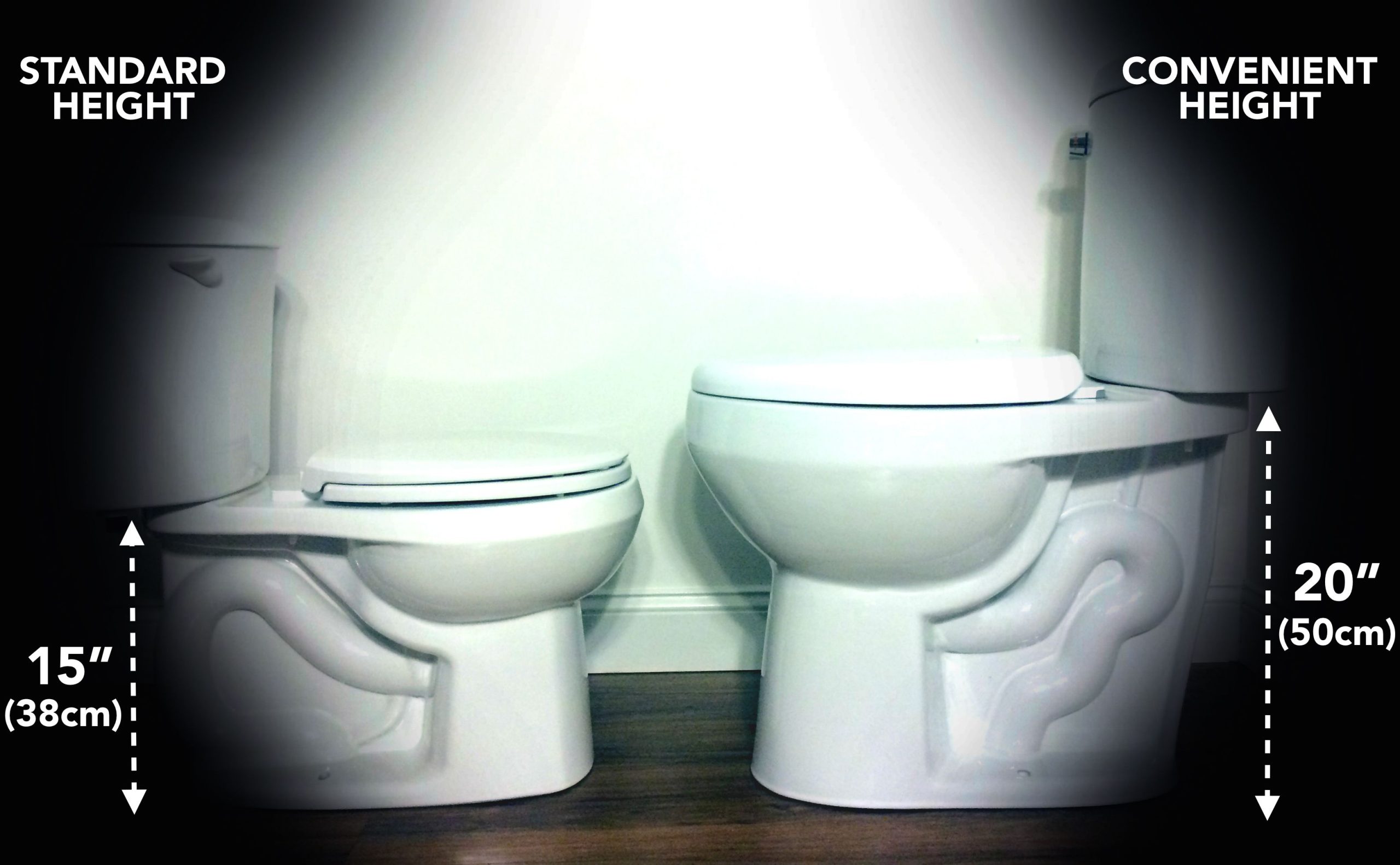Planning a bathroom remodel or simply curious about accessible design? This guide covers everything you need to know about ADA toilet height requirements, offering practical advice and step-by-step guidance to ensure your bathroom is both comfortable and inclusive.
Understanding ADA Toilet Height
Creating a truly welcoming bathroom means considering accessibility from the outset. A key element is getting the toilet height right, and this is where the Americans with Disabilities Act (ADA) comes in. These guidelines aren’t just about checking boxes; they’re about creating a space where everyone feels comfortable and can easily take care of their needs. Non-compliant toilet height can create significant barriers for people with mobility impairments, highlighting the importance of adhering to ADA guidelines.
Why Height Matters
Imagine struggling to use a toilet that’s too low or too high—it can be uncomfortable and even dangerous. The ADA standard height aims to minimize strain and reduce the risk of falls, making using the toilet easier and safer for people with mobility challenges, older adults, and really, anyone who wants a more comfortable experience.
Meeting the Requirements: The 17-19 Inch Rule
The ADA Standards for Accessible Design specify that the distance from the finished floor to the top of the toilet seat should be between 17 and 19 inches. This is comparable to the height of a standard dining room chair—a height most people find easy to sit down on and stand up from. While this range allows for some flexibility, staying within it is essential for ADA compliance. This specific range likely minimizes strain and reduces the risk of falls, particularly for individuals with mobility limitations, although ongoing research continues to explore optimal bathroom ergonomics.
It’s important to note that spring-loaded toilet seats, which automatically return to a lifted position, are generally discouraged. While convenient for some, they can be unstable and difficult to manage for others, especially those with balance issues.
Beyond Height: Essential Accessibility Features
While ADA-compliant toilet height is crucial, a truly accessible bathroom considers the whole experience. Here are other vital factors:
Maneuvering Space
Adequate clear space around the toilet is essential for wheelchair users to comfortably transfer and maneuver. The ADA Standards (https://www.access-board.gov/ada/chapter/ch06) offer specific dimensions for this clearance, ensuring safe and independent use.
Grab Bars
Securely installed grab bars provide crucial support when sitting down or standing up. Correct placement, as detailed in ADA Chapter 6, is essential for optimal leverage and stability, reducing fall risks. Consulting a professional for advice on placement and type is always recommended.
Flush Controls
Easy-to-operate flush controls are essential, especially for those with limited hand strength or dexterity. Lever-style handles or large buttons are generally easier to use than small knobs, ensuring accessibility for people with limited dexterity.
Side Wall Clearance
Maintaining a minimum of 18 inches from the toilet’s centerline to the side wall allows for comfortable transfers. This seemingly minor detail can significantly improve the user experience.
Standard vs. ADA-Compliant Toilets
| Feature | Standard Toilet | ADA-Compliant Toilet |
|---|---|---|
| Seat Height | Typically 14-15″ | 17-19″ |
| Flush Control | Varies | Easy-to-operate |
| Grab Bars | Usually absent | Required or provisions made |
| Maneuvering Space | Often limited | Ample |
Achieving ADA Compliance: A Step-by-Step Guide
Creating an accessible bathroom doesn’t have to be overwhelming. These steps can help you ensure your bathroom is both beautiful and functional for everyone:
-
Consult the ADA Standards: The 2010 ADA Standards for Accessible Design (https://www.access-board.gov/ada/chapter/ch06) provide the most reliable information. Familiarize yourself with the specific requirements to ensure full compliance.
-
Measure Carefully: Before purchasing anything, meticulously measure your bathroom to ensure it meets all ADA requirements, including toilet height and clearances.
-
Choose the Right Fixtures: Select toilets specifically designed for ADA compliance, guaranteeing they meet height requirements and often incorporating other accessibility features. Consider adding an outlet to an existing valley for added convenience.
-
Professional Installation: Professional installation, especially for grab bars, ensures everything is installed correctly and securely, maximizing safety and longevity.
-
Regular Inspections: Periodically check your bathroom to ensure everything remains functional and compliant. Small adjustments can prevent larger issues down the line.
The Importance of Accessibility
Creating an accessible bathroom goes beyond simply meeting regulations—it fosters inclusivity, making everyone feel welcome and comfortable. It also enhances safety and independence for people with disabilities, older adults, and those recovering from injuries.
Comfort Height vs. ADA-Compliant Toilets
While often used interchangeably, “comfort height” and “ADA-compliant” have distinct meanings. Comfort height simply describes a taller toilet, typically 17-19 inches, designed for easier use. ADA compliance, however, signifies that the toilet meets specific accessibility guidelines beyond just height, encompassing features like lever placement, grab bars, and floor space. ADA-compliant toilets prioritize accessibility with their 17-19 inch height, comparable to a standard chair, while standard toilets are typically lower.
Navigating Toilet Height: Standard, Comfort Height, and ADA
“Comfort height” typically refers to toilets with a seat height of 17-19 inches, similar to ADA-compliant toilets. While this offers a comfortable experience for many, it’s important to consider individual needs. A 21-inch “extra-tall” toilet may be ideal for some, but could pose challenges for shorter individuals or those with certain mobility restrictions.
| Height Category | Advantages | Disadvantages |
|---|---|---|
| Standard (14-15 inches) | Usually the least expensive, readily available. | Can be difficult for seniors, people with mobility limitations, and taller individuals. |
| ADA/Comfort Height (17-19 inches) | Easier transfers, generally more accessible and comfortable. | Might be a little high for shorter individuals. |
| Extra-Tall (20-21 inches) | Increased comfort for taller individuals, those with knee or back pain. | May pose a challenge for shorter individuals, children, and those with certain mobility restrictions. |
Choosing the Right Toilet Height
Selecting the right toilet involves considering who will be using it most often, their height, any physical limitations, and personal preferences. If you’re aiming for broad accessibility, especially in public spaces or for users with mobility challenges, an ADA-compliant toilet is essential. For a home bathroom upgrade focusing on increased comfort for most users, a standard comfort height toilet might suffice. Also consider maximizing your closet space with adjustable closet panels for a more organized home.
Remember, a comfortable and accessible bathroom enhances everyone’s experience. By understanding ADA requirements and considering individual needs, you can create a space that is both functional and welcoming.
- Does 100% Polyester Shrink? A Complete Guide to Washing & Drying - April 16, 2025
- Elegant Drapery Solutions for Arched Windows: A Complete Guide - April 16, 2025
- The Best Dining Room Tables with Drop Leaves: A Buyer’s Guide - April 16, 2025










